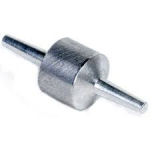kwired
Electron manager
- Location
- NE Nebraska
- Occupation
- EC
Aren't you still limited to 50 amp branch circuits? Now I may have to look at the code book.Probably stage lighting, multiple high wattage lamps.
I can see 60 amp (or even higher) for feeders but my recollection is there is no allowance for over a 50 amp branch circuit for any lighting circuit.
Add it says in 210.23(D) that branch circuits over 50 amps shall only supply non lighting outlet loads.




